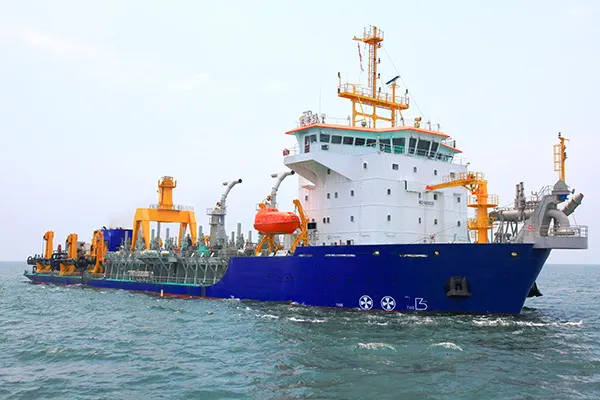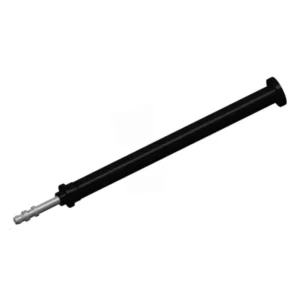Trailing Suction Dredger Overflow Cylinder
Como um dos fabricantes, fornecedores e exportadores de produtos mecânicos de cilindros hidráulicos, oferecemos cilindros hidráulicos e muitos outros produtos.
Entre em contato conosco para obter detalhes.
Correio eletrônico:sales@hydraulic-cylinders.net
Fabricante, fornecedor e exportador de cilindros hidráulicos.
Trailing Suction Dredger Overflow Cylinder
The trailing suction dredger overflow cylinder is a vital component in modern dredging equipment. Designed to optimize the performance of trailing suction dredgers, this cylinder plays a crucial role in managing the overflow system.
The trailing suction dredger overflow cylinder is an essential component for achieving efficient and effective dredging operations. With its robust construction, precise control, reliable actuation, and customizable settings, this cylinder enhances the overall performance of trailing suction dredgers. By following the recommended usage methods and maintenance practices, operators can maximize the performance and longevity of the overflow cylinder, ultimately improving the efficiency and effectiveness of dredging activities.
Trailing Suction Dredger Overflow Cylinder Key Characteristics:
- Robust Construction:
- The overflow cylinder is built with high-quality materials, ensuring durability and longevity even in challenging dredging environments.
- Its robust construction enables it to withstand high pressures, harsh conditions, and constant use, maintaining consistent performance throughout dredging operations.
- Precise Control:
- This cylinder offers precise control over the overflow system, allowing for accurate management of the dredged material.
- It ensures optimal control and regulation of the overflow process, facilitating efficient sediment separation and discharge.
- Reliable Actuation:
- The overflow cylinder provides reliable actuation capabilities, ensuring smooth and consistent operation of the overflow system.
- It delivers the necessary force to control the movement of the overflow gate, ensuring effective management of the dredged material flow.
- Customizable Settings:
- This cylinder allows for customizable adjustment of various parameters, such as opening and closing speed, stroke length, and actuation pressure.
- Operators can tailor these settings to match specific dredging requirements, optimizing the efficiency and effectiveness of the overflow system.
Trailing Suction Dredger Overflow Cylinder Parameter:
| Product Name | Trailing Suction Dredger Overflow Cylinder |
| Features: | Provide pulling force for the lifting of the relief tube |
| Bore diameter: | Up to 280 mm |
| Rod diameter: | Up to 180 mm Stroke up to 6000 mm |
| Pressure: | up to 32MPa |
| Pulling force: | Maximum 900KN |
| Applications: | Trailing Suction Dredger |
Rod diameter: up to 180mm
Stroke up to 6000mm
Dredger Tank Cutter-Suction Cylinders Application:

Usage Method Of Trailing Suction Dredger Overflow Cylinder:
- Installation:
- Follow the manufacturer’s guidelines to install the Overflow Cylinder securely onto the trailing suction dredger.
- Ensure proper alignment and attachment of the cylinder to the overflow gate and associated components, ensuring smooth and reliable operation.
- Overflow System Management:
- Utilize the dredger’s control system to operate and manage the Overflow Cylinder.
- Control the opening and closing of the overflow gate using the designated controls, allowing for precise control over the dredged material flow and discharge.
- Dredging Operations:
- Activate the Overflow Cylinder to adjust the position of the overflow gate as required during dredging operations.
- Adjust the cylinder’s settings, such as speed and stroke length, to optimize the overflow process and ensure efficient sediment separation and discharge.
Como desmontar o cilindro hidráulico?
Disassembling a hydraulic cylinder requires careful attention and adherence to proper procedures to ensure safe and efficient disassembly. Here is a step-by-step guide on how to disassemble a hydraulic cylinder:
- Gather The Necessary Tools And Equipment:
- Wrenches or socket set
- Pry bar or screwdriver
- Rubber mallet or dead-blow hammer
- Clean rags or shop towels
- Hydraulic fluid catch pan or container
- Safety gloves and goggles
- Prepare The Work Area:
- Ensure you have a clean and organized work area with sufficient space to lay out the disassembled components.
- Place an absorbent mat or oil absorbent material to catch any spilled hydraulic fluid.
- Relieve Hydraulic Pressure:
- Before starting the disassembly process, release the hydraulic pressure from the cylinder. This can be done by activating the hydraulic system control valve to retract the cylinder fully.
- Remove Fittings And Connections:
- Using wrenches or a socket set, carefully loosen and remove any fittings, connectors, or hydraulic hoses attached to the cylinder.
- Keep track of the fittings and their corresponding locations for reassembly.
- Secure The Cylinder:
- Ensure the cylinder is properly supported using a suitable workbench or vise to prevent it from falling or rolling during disassembly.
- Remove The Gland Or End Cap:
- The gland or end cap is typically located at the rod end of the cylinder.
- Use a wrench or socket to loosen and remove the retaining bolts or nuts.
- If the gland or end cap is stuck, you can lightly tap it with a rubber mallet or dead-blow hammer to help loosen it.
- Once loose, carefully remove the gland or end cap, allowing any hydraulic fluid to drain into the catch pan.
- Extract The Piston And Rod Assembly:
- With the gland or end cap removed, you can now access the piston and rod assembly.
- Gently slide the piston and rod assembly out of the cylinder barrel, ensuring you have a firm grip to prevent it from falling or getting damaged.
- If the assembly is stuck, you can use a pry bar or screwdriver to carefully apply leverage and assist in its removal.
- Inspect And Clean The Components:
- Once disassembled, inspect all components for signs of wear, damage, or contamination.
- Clean the components thoroughly using clean rags or shop towels, removing any dirt, debris, or hydraulic fluid.
- Pay close attention to the piston, rod, cylinder barrel, and seals.
- Replace Or Repair Components:
- If any components are worn out or damaged, it is recommended to replace them with new ones.
- Inspect the seals for any signs of wear, and replace them if necessary.
- Consult the manufacturer’s guidelines or seek professional advice if you are unsure about component replacement or repair.
- Remontagem:
- Follow the manufacturer’s instructions for reassembling the hydraulic cylinder.
- Apply a suitable hydraulic fluid or lubricant to the seals and components during reassembly.
- Ensure all fittings and connections are tightened to the specified torque values.
- Double-check the proper alignment and orientation of components before completing the reassembly.
Aptidão e capacidade da fábrica:
(1) Montagem
Temos uma plataforma de montagem de pesquisa e desenvolvimento independente de primeira classe. A oficina de produção de cilindros hidráulicos tem quatro linhas de montagem semiautomáticas de cilindros de elevação e uma linha de montagem automática de cilindros de inclinação, com uma capacidade de produção anual projetada de 1 milhão de peças. A oficina de cilindros especiais é equipada com várias especificações de um sistema de montagem de limpeza semiautomática com uma capacidade de produção anual projetada de 200.000 peças e equipada com famosos equipamentos de usinagem CNC, um centro de usinagem, um equipamento especial de processamento de cilindros de alta precisão, uma máquina de solda robotizada, uma máquina de limpeza automática, uma máquina de montagem automática de cilindros e uma linha de produção de pintura automática. O equipamento crítico existente é de mais de 300 conjuntos (conjuntos). A alocação ideal e o uso eficiente dos recursos do equipamento garantem os requisitos de precisão dos produtos e atendem às necessidades de alta qualidade dos produtos.


(2) Usinagem
A oficina de usinagem é equipada com um centro de torneamento de trilho inclinado personalizado, um centro de usinagem, uma máquina de brunimento de alta velocidade, um robô de soldagem e outros equipamentos relacionados, que podem lidar com o processamento de tubos de cilindros com diâmetro interno máximo de 400 mm e comprimento máximo de 6 metros.

(3) Soldagem

(4) Pintura e revestimento
Com linhas de revestimento de tinta à base de água automáticas de cilindros de pequeno e médio porte, para obter carregamento e descarregamento automáticos de robôs e pulverização automática, a capacidade projetada é de 4.000 peças por turno;
Também temos uma linha de produção de tinta semiautomática para cilindros grandes, acionada por uma corrente elétrica, com capacidade de projeto de 60 caixas por turno.


(5) Testes
Temos instalações de inspeção e bancos de teste de primeira classe para garantir que o desempenho do cilindro atenda aos requisitos.

We are one of the best hydraulic cylinder manufacturers. We can offer comprehensive hydraulic cylinders. We also provide corresponding caixas de câmbio agrícolas. Exportamos nossos produtos para clientes em todo o mundo e conquistamos uma boa reputação devido à qualidade superior de nossos produtos e ao serviço pós-venda. Convidamos clientes nacionais e estrangeiros a entrar em contato conosco para negociar negócios, trocar informações e cooperar conosco!
Faça um tour pela nossa fábrica de RV:
Faça um tour pela nossa fábrica de RV com o seguinte
Como funciona o cilindro hidráulico da empilhadeira?
Cilindro hidráulico Aplicação:



